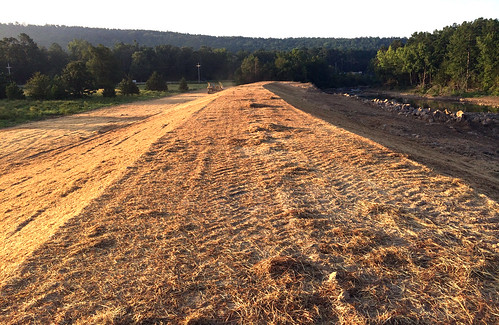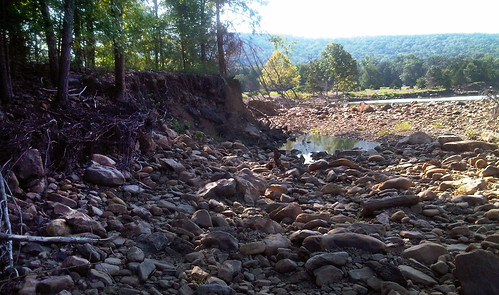
When flood waters tore through the levee along Mill Creek in western Arkansas in May 2013, the small unincorporated community of Y City in Scott County sustained massive damage. Mill Creek rose more than 19 feet destroying lives, homes, businesses and a levee.
Flood damage covered a five-mile area and killed five people. A month later, northwestern Arkansas was hit with record rainfall and subsequent flooding again threatened Y City since a 900-foot section of the previously damaged levee was still in need of repair.
Thanks to the USDA’s Natural Resources Conservation Service (NRCS), Poteau River Conservation District and Scott County leadership, residents in the Y City community can now rest a little easier when storm clouds threaten.
After attempts to receive financial assistance through some federal agencies weren’t successful, Scott County representatives turned to NRCS and the Poteau River Conservation District for help. This need for assistance turned out to be a true testament to the strong relationship forged over years between NRCS and the local conservation district.
The levee break occurred on private property so permission to repair the area had to be obtained from the landowner first. Once that was secured, NRCS was able to team up with the conservation district through the agency’s Emergency Watershed Protection Program (EWP), to begin repairs. The district was the official sponsor of the project.

Scott County is considered by NRCS to be a limited resource county because of a number of factors, such as low income levels and high unemployment rates. This designation allowed 90 percent of the costs of reconstructing the levee to be granted to the Poteau River Conservation District through the EWP. As the sponsor, the district provided the dirt for the levee and 10 percent of the construction costs.
NRCS engineers were the boots on the ground. They surveyed the damage, designed the project and oversaw construction. The project entailed removing flood debris from the damaged portion of the levee and rebuilding it with what is referred to as earth fill. More than 25,000 cubic yards of earth fill was hauled from a location two miles away. The rebuilt area was then compacted down by a machine operated roller and then reseeded and mulched for coverage.
The final cost of the project was nearly $300,000 and was completed within two months this past summer.
Because of these partnerships forged by adversity, hundreds of residents and 12 homes with multiple shops, barns and outbuildings are now protected. A local truck stop, restaurant, roads and utilities have also benefited from the new levee.
“Safety for the residents was a primary concern of mine and those I’ve spoken with since the project was completed said they feel a lot safer,” Scott County Judge James Forbes. “The levee repair looks outstanding.”


